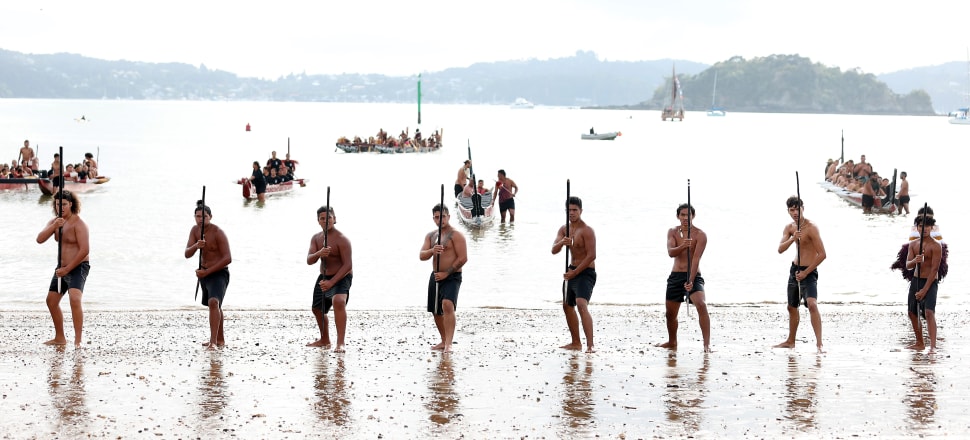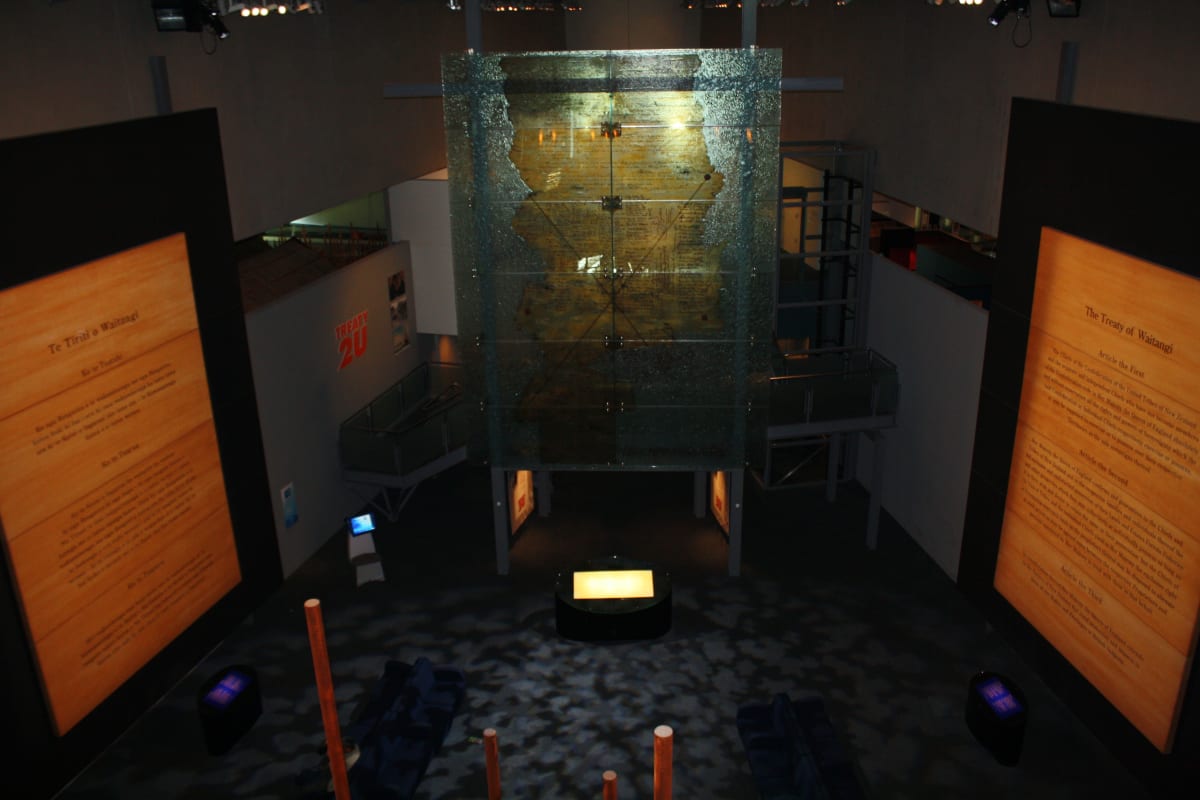
A referendum on Te Tiriti o Waitangi would be corrosive and unfair, writes Dame Anne Salmond, but there is room for an inquiry into recent interpretations of the treaty
When the Treaty of Waitangi was signed at Waitangi in 1840 and elsewhere around the country, it was the Māori text that was discussed and signed almost everywhere.
The English text of the Treaty that was read out at Waitangi and elsewhere for the benefit of non-Māori speaking European officials and settlers is significant, but it is Te Tiriti o Waitangi that carries the moko marks and signatures of the various rangatira, and those who signed on behalf of Queen Victoria.
Ever since the English text of Te Tiriti was sent to Goveror Gipps in New South Wales and certified by the British missionary Henry Williams ‘as literal a translation of the Treaty of Waitangi as the idiom of the language will admit of,’ however, it is the English text that has often been cited as the official version of the Treaty of Waitangi.
Much of the scholarship, and official and legal commentaries on Te Tiriti have also been provided by scholars, officials and lawyers who are unable to read Te Tiriti o Waitangi in the original. Inevitably, like the English text of the Treaty itself, these draw upon British (or European) rather than ancestral Māori understandings.
The original gap between the understandings of the English officials who drew up the English draft of the Treaty of Waitangi, and those of the rangatira who debated and signed Te Tiriti o Waitangi in te reo was difficult to bridge, as Henry Williams and his son Edward found when they translated the English draft into Māori.
This led to fundamental differences in meaning between the English text of the Treaty and Te Tiriti o Waitangi itself, the document that was debated and signed around the country in 1840, and as interpreted since.

These fundamental differences were recognised from the beginning, hence the many ‘back translations’ of Te Tiriti into English, which do their best to capture its meaning as the rangatira understood it at the time, in an effort to clarify the promises that were exchanged with Queen Victoria and her representatives in 1840, and ratified with their signatures or moko marks.
According to the ‘contra proferentem’ rule (Latin: ‘against the offeror’; or ‘interpretation against the draftsman’) in interpreting contracts (including treaties), if an agreement is ambiguous, the preferred legal meaning is ‘the one that acts against the interests of the party who provided the wording.’
In the case of Te Tiriti o Waitangi, those who wrote the English draft of the Treaty and those who translated it into Te Tiriti did so on behalf of the British Crown. In that case, where its meaning is ambiguous, the preferred legal interpretation should be ‘one that acts against the interests of the party who provided the wording,’ while leaning towards those of the rangatira who signed Te Tiriti on behalf of their hapū, and their descendants.
There is no chance of a referendum on ‘the principles of the Treaty’ achieving this kind of outcome.
First, like so many who have interpreted Te Tiriti in the past, most of those who would vote on the question would be unable to read Te Tiriti o Waitangi in the original. Their understandings of its ‘principles’ would inevitably be shaped by non-Māori understandings of Te Tiriti, and its translations into English, thus breaching the ‘contra proferentem’ rule.
Second, any referendum on ‘the principles of the Treaty’ would be initiated, framed and conducted by the Crown. That would give it a privilege and power in relation to the interests of the descendants of the rangatira who signed Te Tiriti that also violates the ‘contra proferentem’ doctrine.
Third, a referendum at a time when the descendants of the rangatira who signed Te Tiriti are a relatively small minority in the wider population would give them relatively little say in the matter. To marginalise their interests in this way would be another breach of the ‘contra proferentem’ rule.
For these reasons, the idea of putting the ‘principles of the Treaty’ to a popular vote is unjust and unwise, and should not be entertained by any responsible government.
That being said, there are questions that can be fairly asked about more recent official interpretations of the Treaty.
These include the Treaty of Waitangi Act 1975, in which the government of the day defined the Treaty as a bi-lateral agreement ‘between Her late Majesty Queen Victoria and the Maori people of New Zealand.’ It added that in making appointments to the Waitangi Tribunal, ‘the Minister of Maori Affairs shall have regard to the partnership between the two parties to the Treaty.’
This bi-lateral, ‘two party’ reading of the Treaty was taken further in the 1987 Lands Case, in which the judges of the Court of Appeal described Te Tiriti as a ‘partnership between two races,’ or between ‘Maori and Pakeha’ or ‘the Crown and the Maori race.’ Here, the colonial idea of ‘race,’ with its origins in social evolutionary theory and scientific racism, was imported into the translation.
This is unfortunate, given the lack of scientific validity of this imperial concept and its association with slavery and other atrocities. It has fostered increasingly racialised readings of Te Tiriti, at a time when whakapapa lines in New Zealand are increasingly entangled.
In Te Tiriti itself, however, the relationships between Queen Victoria and the various rangatira who signed the Treaty and their hapū and ‘nga tangata maori o Nu Tirani’ (the indigenous inhabitants of New Zealand) and the settlers are clearly multilateral, not bilateral – a network of relations (as in whakapapa, for instance), not a bi-racial split.
In Ture (Article) 1 of Te Tiriti, the rangatira give to the Queen of England absolutely and forever all the kawanatanga of their lands. As the Preamble explains, this gave her permission to send a Kawana or Governor to New Zealand as a mediator (‘hei kai wakarite,’ lit. one who makes things equal) to the indigenous persons of New Zealand (‘ki nga tangata maori o Nu Tirani’), to bring laws, peace and tranquil living to all parts of the country (‘ki nga wahikatoa o te wenua nei me nga motu’), where many members of her iwi were already living, or would be arriving.
Kāwanatanga thus involves a multilateral network of relations among the Queen, the Kāwana or Governor, the indigenous inhabitants of New Zealand and the incoming settlers. It was not purely a matter for the settlers, as is sometimes claimed. Nor was it a cession of sovereignty, although it did give the right to govern.
In Ture 2, the Queen agrees with the rangatira (‘chiefs’), the hapu (‘tribes’) and ‘nga tangata katoa o Nu Tirani’ (all the persons of New Zealand) to the tino rangatiratanga of their lands, dwelling places and all of their taonga.
This upholds the mana of each rangatira, hapū and person in relation to their ancestral territories and taonga or treasures – again, a complex network of relationships with each other as well as the Queen. This reading echoes findings in Wai 2358, a recent inquiry into the parties to Te Tiriti in relation to RMA appointments.
Likewise in Ture 3, the Queen promises to care for ‘nga tangata maori o Nu Tirani’ (the normal, everyday, indigenous inhabitants of New Zealand) and gives to them ‘nga tikanga katoa rite tahi’ (all the tikanga – right ways of doing things - absolutely equal) to her subjects, ‘nga tangata o Ingarani’ (the inhabitants of England). Again, this is a network of relationships, with many different players.
In English, there is only one definite article (the), while in te reo there are two, singular (te) and plural (ngā). To define ‘nga tangata maori’ in the plural as ‘the Maori people’ in the singular, as in the 1975 Treaty of Waitangi Act, or ‘the Maori race’ in the 1987 Lands Case, is a translation error. This grammatical difference – at least in part - allows an interpretive slippage into a reading of Te Tiriti as a ‘partnership between two races.’
Clearly, however, the Queen’s promise of absolute equality in Ture 3 was given to ‘tangata’ in the plural, as persons or individuals, and their tikanga, not to two different ‘races,’ and this is also unambiguous in the English draft of Article 3. Here, at least, there is no confusion between the two texts.
Nor is there any mention of ‘race,’ or anything like it, in Te Tiriti o Waitangi. It seems that the bi-racial reading of Te Tiriti in the 1987 Lands case was mistaken.
Questions like these about Te Tiriti are worth debating, since they bear on the compatibility between the promises that were exchanged in 1840, and a democratic society. At the same time, we must bear in mind that almost as soon as they were made, those promises were radically dishonoured.
For all of these reasons, a referendum on ‘the principles of the Treaty,’ given its populist appeal to the majority and its inflammatory potential, is not the right (tika) way to conduct this kind of discussion. It would be unjust and divisive, inciting extreme views in all directions and fostering misinformation, anger and ill-will.
Rather, this should be a mana-enhancing exercise that strengthens rather than divides the nation. If it wishes to clarify the meaning of Te Tiriti, rather than a referendum, the incoming government would be wise to think about a new kind of inquiry, one based on a spirit of equality among all the parties, and mutual respect.
This would be in keeping with Queen Victoria’s promises to the rangatira, hapū, indigenous persons and settlers and their descendants, kia ora ai te iwi – so we can live together, and thrive.







